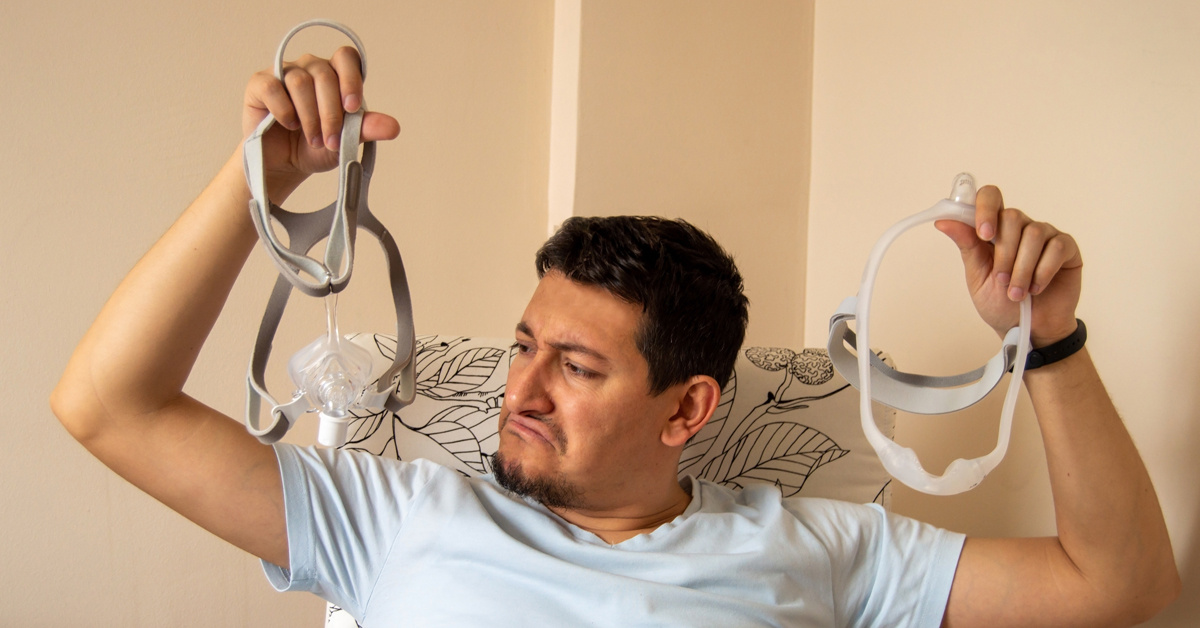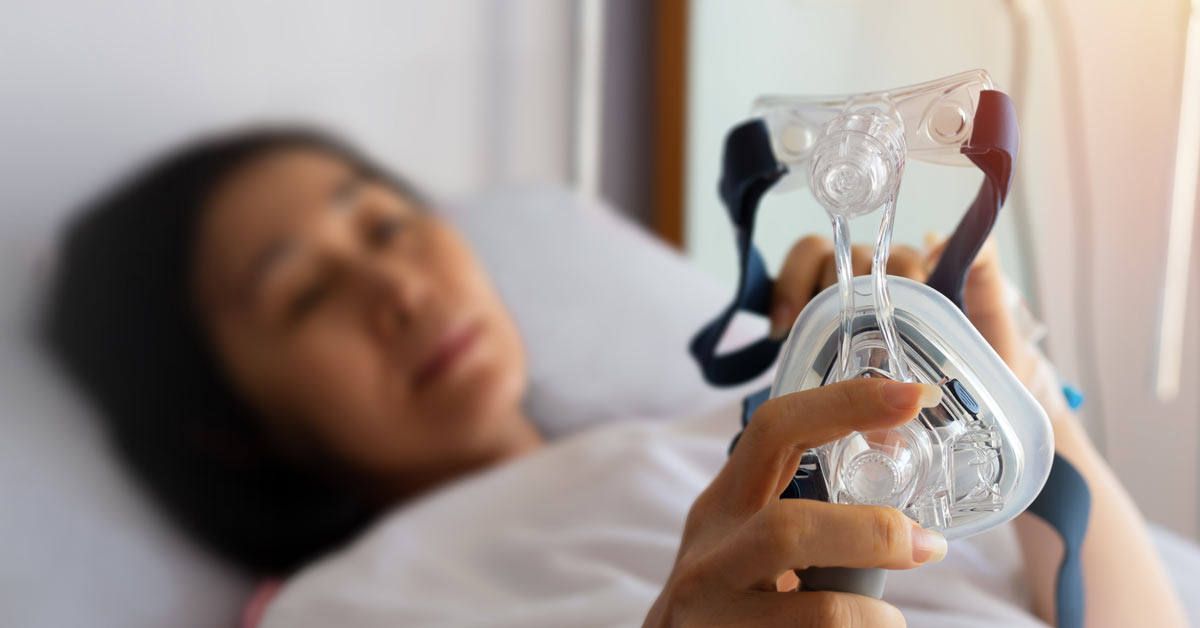How Doctors Choose Which Treatment to Prescribe for Your COPD.
For people with COPD (chronic obstructive pulmonary disease), it’s important to reduce the number and severity of exacerbations (also called flare-ups). A proven and popular form of treatment is inhalation therapy, which includes the use of nebulizers or inhalers.
Both quickly and effectively deliver medicine into your lungs to help relieve flare-ups, improve your ability to exercise, and enhance your quality of life.
Lesley Williams, Apria’s Market Clinical Trainer, and a registered respiratory therapist adds, “They may also reduce the risk of a trip to the emergency room.”
Yet, nebulizers and inhalers are two different types of treatment. And for certain people, a nebulizer may be more appropriate.
What Is a Nebulizer?
A nebulizer is a small device that turns liquid medicine into a fine mist that you inhale through a mouthpiece or a mask. This delivers the medicine directly into your lungs.
In addition to COPD, doctors often prescribe nebulizers for people with asthma, cystic fibrosis, and bronchiectasis (a condition where lung airways become damaged, making it difficult to clear mucus).
Nebulizers deliver various types of medicines, including:
- Antibiotics
- Anticholinergics (to decongest bronchial passages)
- Bronchodilators
- Corticosteroids
- Mucolytics (to thin mucus)
The Three Types of Nebulizers
Jet nebulizers: These have been around the longest. They use compressed air to generate an aerosol (a fine mist). They’re effective but can be loud and difficult to clean.
Ultrasonic nebulizers: These are quieter than jet nebulizers but cost more. They use high-frequency ultrasonic vibrations to turn medicine into a mist.
Vibrating mesh nebulizers: Quieter and more portable than the other nebulizers, these are also more expensive. Medicine passes through a very fine mesh to generate the aerosol.
The Pros and Cons of Nebulizers
Nebulizers offer many advantages—but also a few drawbacks.
The pros
- Nebulizers can be more convenient for delivering large doses of medicine
- Nebulizers are generally easier to learn to use than inhalers
- During a flare-up when speed is important, nebulizers may be simpler to use than an inhaler
- Nebulizers have better deposition, meaning the medication is deposited into more areas of the lungs
The cons
- Nebulizers require a power source such as an electrical outlet so not as portable as an inhaler
- Nebulizers cost more than inhalers
- Nebulizers take longer to use, often requiring 10-15 minutes of breathing
How Is an Inhaler Different Than a Nebulizer?
Most people with COPD use an inhaler. The great advantage they offer over nebulizers is that they’re portable. You can carry inhalers in your pocket. They also deliver medicine very quickly, usually in a few puffs over a few minutes. You don’t have to wear a mouthpiece or mask as you do with a nebulizer. And an inhaler costs less than a nebulizer.
One challenge, however, is that it takes practice to use an inhaler correctly. You need to coordinate your breathing, inhaling the medication as it leaves the inhaler and then holding your breath to allow all the medicine to enter your lungs.
For those who are unable to use inhalers correctly—studies show that up to 50% of people with COPD and asthma don’t—nebulizers are usually a better choice.
There are three types of inhalers:
Hydrofluoroalkane inhalers (HFAs), formerly called metered dose inhalers (MDIs), use a small, handheld aerosol canister to deliver medicine to your lungs.
Dry-powder inhaler (DPI) is similar to an HFA, but the medication is in powder form.
Soft-mist inhalers (SMI) offer a newer type of inhaler. An SMI produces a measured dose in a slow-moving mist that delivers more of the medicine to your lungs.
How to Use Your Nebulizer
Your nebulizer has three parts: a medicine cup, a cap, and a mask or mouthpiece. Jet nebulizers also come with a compressor and tubing.
Nebulizers are fairly simple to use. Just follow these steps:
- Wash your hands.
- Pour the prescribed dose of medication into the medicine cup and secure it with its cap.
- Attach the mouthpiece or mask, then connect one end of the tubing to the compressor and the other to the medicine cup.
- Turn the nebulizer on. You’ll see a mist coming from the mouthpiece or mask.
- Place the mouthpiece in your mouth or the mask over your face.
- Sit in an upright relaxed position and hold the nebulizer in the position recommended by the manufacturer.
- Breathe normally through your mouth or nose until all the medicine is gone from the cup or you no longer see any mist. This usually takes 10-15 minutes.
How to Care for Your Nebulizer
To prevent bacteria from growing in your nebulizer, which can cause lung infections, it’s important to keep your nebulizer clean.
“Think of cleaning your nebulizer as part of your treatment,” says Apria’s Lesley Williams. “When you finish your treatment, disassemble and wash all the nebulizer parts in warm soapy water. Then rinse them and allow them to air dry in a clean, dry space.”
Also, once a week, disinfect your nebulizer parts by soaking them in a vinegar solution for 30-60 minutes.
One note: Never put the tubing or compressor in water. Instead, clean them with a damp, soapy towel or disinfectant wipe.
Of course, each nebulizer is different, so refer to the manufacturer’s cleaning instructions.
Don’t Miss This “Mist Opportunity” to Control Your COPD
Nebulizers help treat COPD exacerbations quickly by delivering a fine medication mist right where you need it: your lungs.
To learn more about which nebulizer might be right for you, talk to your doctor. As a leader in COPD management, Apria is also available to work with you and your doctor to ensure you get the COPD treatment that will help you feel your best!
References
1. ABCs of Using a Nebulizer. American Lung Association. https://www.lung.org/getmedia/3124fe1d.
2. Santos-Longhurst, A. (Updated 2019, March 11). Nebulizers for Chronic Obstructive Pulmonary Disease. Healthline. https://www.healthline.com/health/copd/nebulizers-for-severe-copd.
3. Morgan Griffin, R. (2022, December 3). Which Devices Help Treat COPD? WebMD. https://www.webmd.com/lung/copd/how-copd-devices-work.
4. (2022, December 9). How to use a nebulizer. Medline Plus.
https://medlineplus.gov/ency/patientinstructions/000006.htm.
5. Galen, N. (2019, April 12). Nebulizers: What they are and how to use them.
Medical News Today. https://www.medicalnewstoday.com/articles/324947.
LEGAL DISCLAIMER: Material in this newsletter is provided for general health education and informational purposes and to provide references to other resources only; it may not apply to you as an individual. While Apria Healthcare believes that the information provided through this communication is accurate and reliable, Apria Healthcare cannot and does not make any such guarantee. It is not intended to be a replacement for professional medical advice, evaluation, diagnosis, services or treatment (collectively, “medical treatment”). Please see your healthcare provider for medical treatment related to you and your specific health condition(s). Never disregard medical advice or delay seeking medical care because of something you have read on or accessed through this website. Reading this newsletter should not be construed to mean that you have a healthcare provider/patient relationship.

.png)



